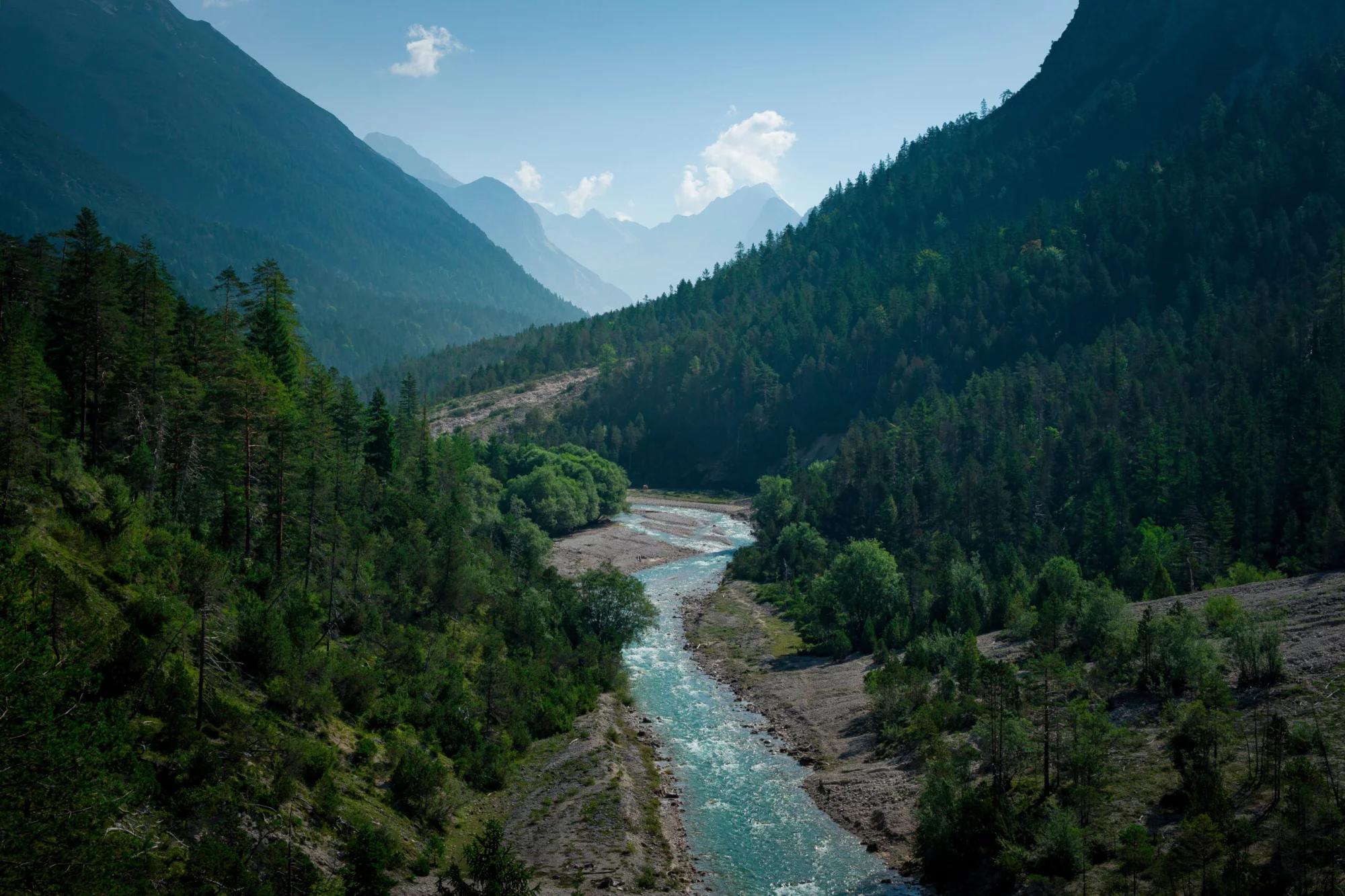19.5 km and 880 m of elevation gain / 70 m of elevation loss












3-Day Adlerweg
3 days / 2 nights
|
Starting point
Scharnitz
Finish point
Innsbruck
Season
From June to September
Technical level
3/5
Fitness level
3/5
Tour type
Inn-to-Inn
Starting point
Scharnitz
Finish point
Innsbruck
Season
From June to September
Technical level
3/5
Fitness level
3/5
Tour type
Inn-to-Inn
Highlights
- Traverse the iconic Adlerweg, experiencing the silhouette of an eagle's flight through Tyrol's alpine splendor
- Journey through diverse landscapes from the quaint village of Scharnitz
- Ascend to Pfeishütte and Hallerangerhaus, marveling at panoramic vistas and the serene beauty of Tyrol's mountains
- Navigate the historic trails once tread by pioneers, blending natural wonder with alpine heritage
- Conclude with a gentle descent along the Isar River, a path framed by the tranquil beauty of the Hinterautal valley
Itinerary of the trip
FREE ITINERARY
Get Your Travel Itinerary
Loved the itinerary? Enter your email below, and we'll send a copy straight to your inbox.
What’s included in the price?
Self-guided
NOT INCLUDED
OPTIONAL EXTRAS
What to bring to the tour
- Hiking shoes/boots
- 25 to 45-liter backpack
- Base layer
- Sports T-shirts
- Hiking shorts
- Hiking water-repellent pants
- Waterproof jacket
- Midlayer
- Sports socks and underwear
- Leisurewear for evenings
- Down jacket
- Gloves
- Shade hat/cap
- Warm headwear
- Sunscreen
- Sunglasses
- Headlamp
- Hiking poles
- ID card or passport
- Snacks
- Cash
- Water bottles or hydration pack
- Sleeping liner
- Toiletries
- Toilet paper
- Small first aid kit
Incorporating the essence of Tyrol's Adlerweg into a short but memorable trek from Scharnitz to Innsbruck. this journey offers a profound connection to the Alpine landscapes and cultural heritage of Austria.
The Adlerweg, or Eagle Walk, represents a journey of exploration and discovery across Tyrol, symbolized by the eagle's flight path that the trail emulates.
The route from the vibrant city life of Innsbruck to the serene alpine settings of Pfeishütte and Hallerangerhaus and beyond is a journey through contrasting worlds, where modern amenities meet timeless landscapes.
Throughout your journey, every detail is thoughtfully curated to enhance your experience. From carefully selected accommodations to the seamless blend of challenge and serenity in the trek's design, this tour embodies the spirit of Alpine exploration.
Each adventurer receives a detailed personalized digital guidebook, your guide for insights into the Adlerweg's significance, and tips for making the most of your journey.
Furthermore, to ensure a seamless and enjoyable adventure, we equip you with GPS navigation through an easy-to-use app. This allows you to focus on the beauty surrounding you, being secure that you're on the right path.
Join us on this exceptional route fromScharnitz to Innsbruck, where the spirit of the Alps is yours to discover!
In case you have a couple extra days on your hands and are looking for more of a challenge, check out our Adlerweg highlights tour and turn your incredible hiking getaway into a full week of exploration.
Frequently Asked Questions
Ratings & Reviews

5.0 average rating

We had a lovely hike today with our guide Klemen. He personalized the tour on our needs and interests, so that we saw places we wouldn't without his experience. The hike was a little bit slippery after the rain from the last days and it went a lot upwards, but it was totally worth it! Thanks again :)


Our 3 day hike had to be rearranged 2/2 weather, so a one day hike was arranged for us. We appreciated the concern about weather and conditions. Our hike was with Matevz, who was a great guide. Very helpful and knowledgable. Would definitely recommend and will be back for a longer hike one day!
We had a lovely hike today with our guide Klemen. He personalized the tour on our needs and interests, so that we saw places we wouldn't without his experience. The hike was a little bit slippery after the rain from the last days and it went a lot upwards, but it was totally worth it! Thanks again :)


Our 3 day hike had to be rearranged 2/2 weather, so a one day hike was arranged for us. We appreciated the concern about weather and conditions. Our hike was with Matevz, who was a great guide. Very helpful and knowledgable. Would definitely recommend and will be back for a longer hike one day!
All available guidance options
Self-guided
Are you looking for a good adventure and limitless flexibility? Then you should try out a self-guided tour, perfect for independent explorers who want to set their own pace. Without the need to stick to a group schedule, you’re free to linger at scenic viewpoints while the logistics are taken care of in advance.
.svg)
VALUE YOUR TIME
With everything on your plate, let us handle the vacation planning, so your valuable time stays exactly where you need it.
.svg)
TRIED & TESTED ADVENTURES
Only the best hut to hut hikes of Austria, cherry-picked by our local team with an in-depth knowledge of the region.
TRUSTED BY MANY
We are a financially protected company operating since 2014, and with thousands of satisfied customers in the past, we still put you first.

SELF-GUIDED TRAVEL
Explore independently and with confidence while we keep everything running from behind the scenes.
.svg)
OUTDOOR SPECIALISTS
We are a team of outdoor specialists equipped with the knowledge and insight to bring you the best hiking experiences.
























